cultură şi spiritualitate
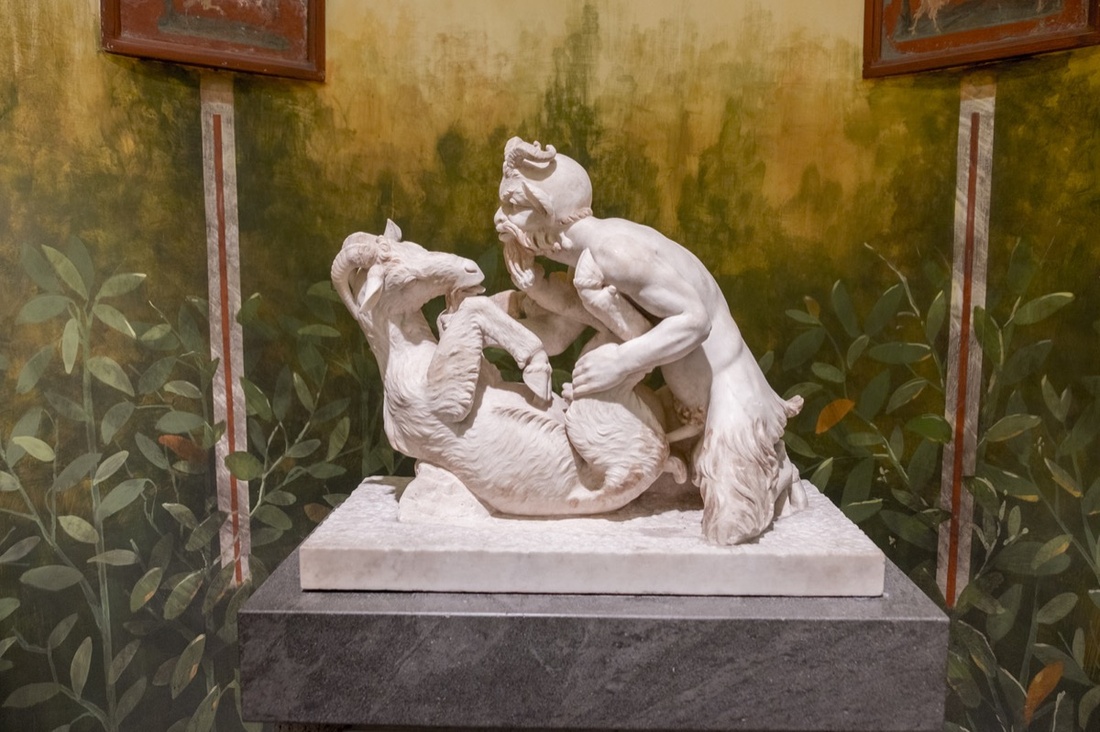
Photo by Darren and Brad, via Flickr.
For more than 1,600 years, the remains of Herculaneum—a lavish Roman resort town 10 miles north of Pompeii—lay buried beneath a deluge of Vesuvian ash. It wasn’t until 1738, under the rule of King Charles III, that the ancient settlement was re-discovered a few miles from the royal hunting palace at Portici.
The ensuing excavation, masterminded by Swiss army engineer Karl Weber, eventually unearthed one of the greatest treasure troves in archeological history: la Villa dei Papiri, home to over 1,800 carbonized scrolls and the only extant library from Roman antiquity.
Then, in 1752, Weber stumbled across something else—a marble statue of what appeared to be two figures locked in eternal embrace. Some 300 feet below ground, soot and darkness obscured the finer features of the specimen. Wasting no time, Weber swiftly ordered the statue to the surface for further inspection.
By the time the artifact was disgorged, borne on the backs of several straining prison laborers, the entire court of King Charles III was on hand to witness this latest unveiling. The air was thick with suspense. Rushing ahead of the royal procession, servants had arranged an assembly of folding chairs, a picnic, and a makeshift canopy over the entrance to Weber’s tunnel. A court artist had been marshalled to capture a preliminary rendering. As the statue came into view, the seated courtiers strained for a glimpse.
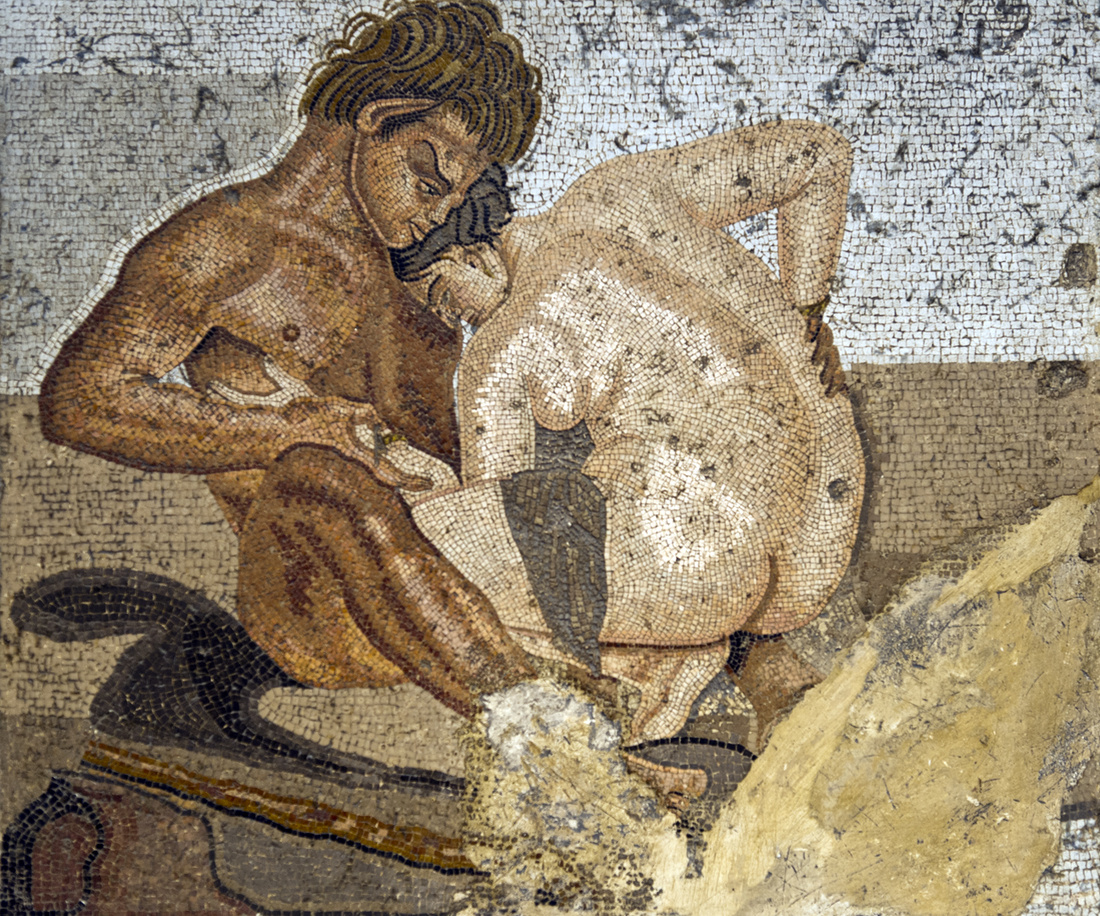
Pompeii fresco from the House of the Faun, Gabinetto Segreto, Naples National Archaeological Museum. Photo by Darren Puttock, via Flickr.
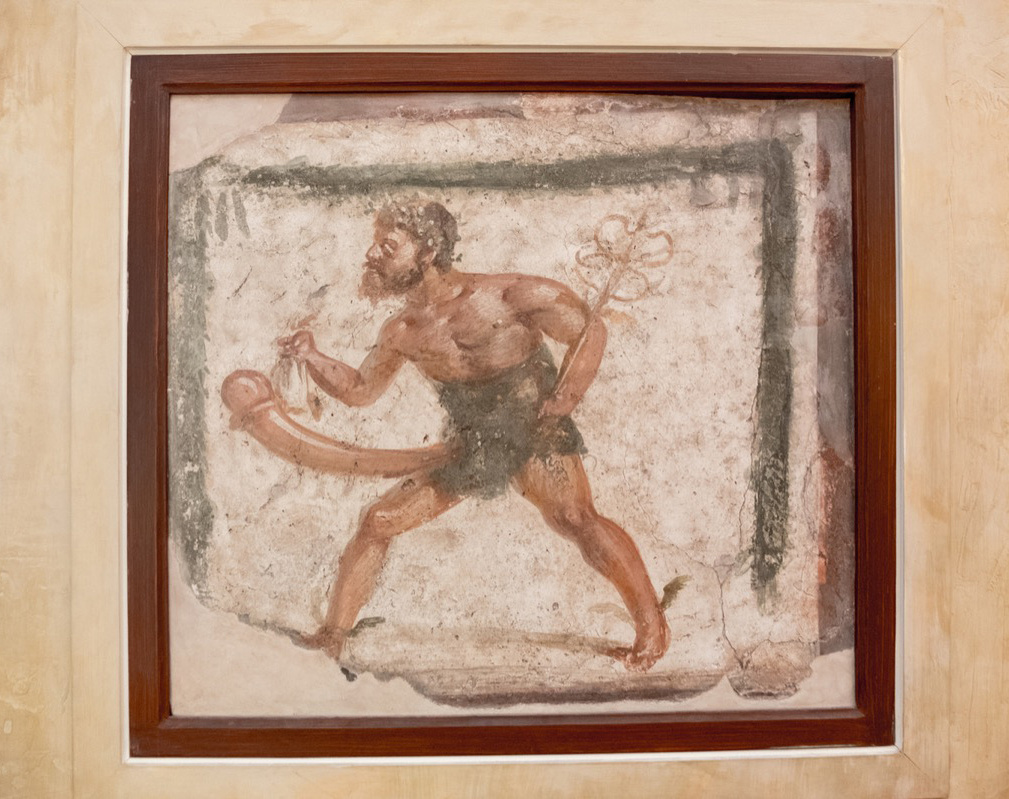
Photo by Darren and Brad, via Flickr.
There was a pair of horns. No, two. Four cloven feet at varying degrees of elevation. The marbled duo gazed deeply into each other’s eyes, one supplicant, the other languid and obsequious.
Staring back at them was Pan—god of the shepherds—contentedly penetrating a female goat.
Thoroughly scandalized, the king promptly fled, ordering the cessation of all excavation efforts at Herculaneum and the immediate isolation of the offending statue in a locked cupboard. Rather than bolstering the prestige of the nascent Bourbon regime, the archeological expedition seemed instead to have yielded a colossal embarrassment.
As news of the discoveries at Herculaneum and Pompeii spread, a French nobleman named Gabriel Seigneux de Correvon traveled to Italy to tour the sites. Upon returning home, he lavished the king with “immortal praise” for his patronage, enthusing that the excavation “crowns the glory of a magnanimous King whose sensible authority directs and leads this great undertaking.” Mollified, the king relented, and the dig was soon resumed in earnest.
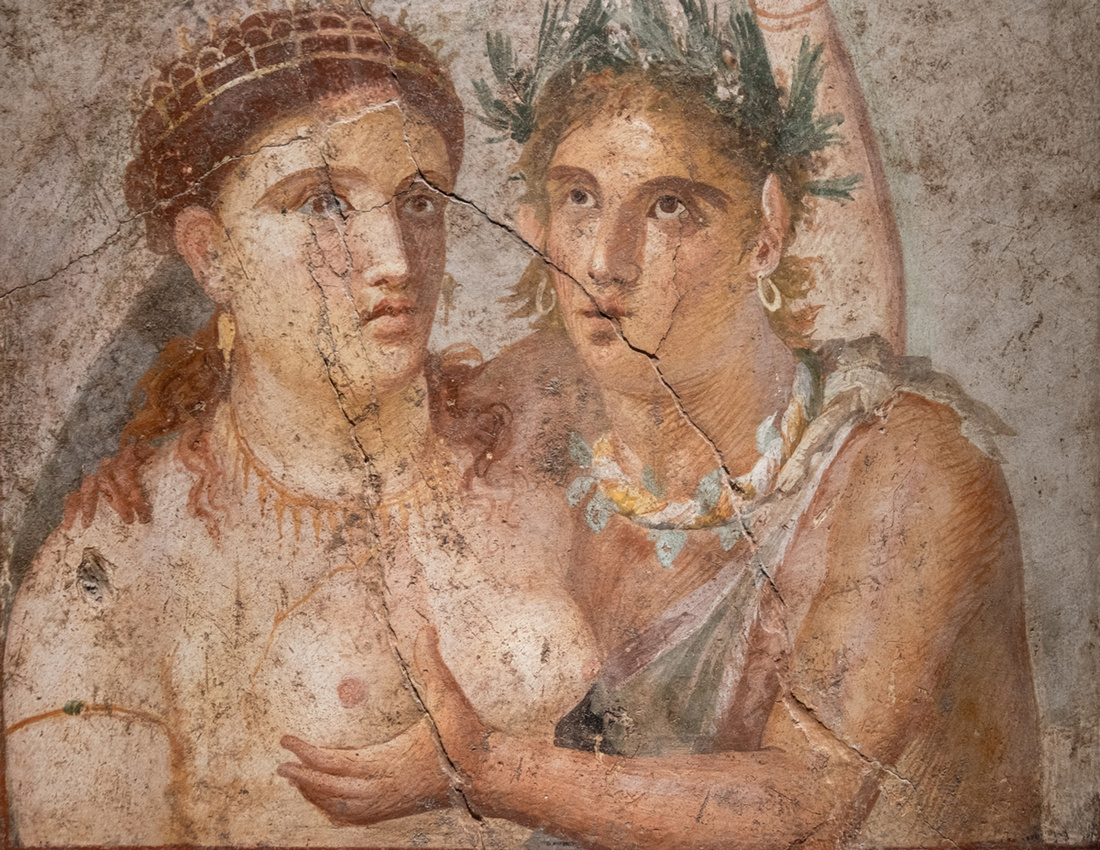
Photo by Darren and Brad, via Flickr.
Still, if there was any suspicion that the statue had been an aberration in a trove of otherwise “proper” antiquities, these hopes were soon dashed. As excavators dug deeper, a torrent of ever-more-libidinous relics emerged: frescoes and mosaics of interspecies fornication, terracotta satyrs dwarfed by their own gargantuan members, and—in one instance—a set of bronze wind chimes depicting a gladiator at war with his own panther-shaped phallus.
And then there was the profusion of stand-alone male organs, protruding from street corners and shop walls and, on occasion, even serving as massive concrete tombstones. As one pithy journalist would later summarize, the “display at Naples shows penises with bells hanging from them, penises with legs, penises with wings and, in one instance, a penis with bells, legs and wings.”
By 1794, the erotic antiquities had grown numerous enough to merit their own cloistered room in the Herculaneum Museum at Portici. At the dawn of the 19th century, they were relocated to the Royal Bourbon Museum (today the National Archaeological Museum of Naples). Following an 1819 visit by another scandalized royal—this time, the future King Francesco I—the 102 “monuments of pagan licentiousness” were formally sequestered. The space came to be known as the Gabinetto Segreto, or Secret Cabinet, open only to those of “mature age and proven morality” who had been issued a special entry permit.
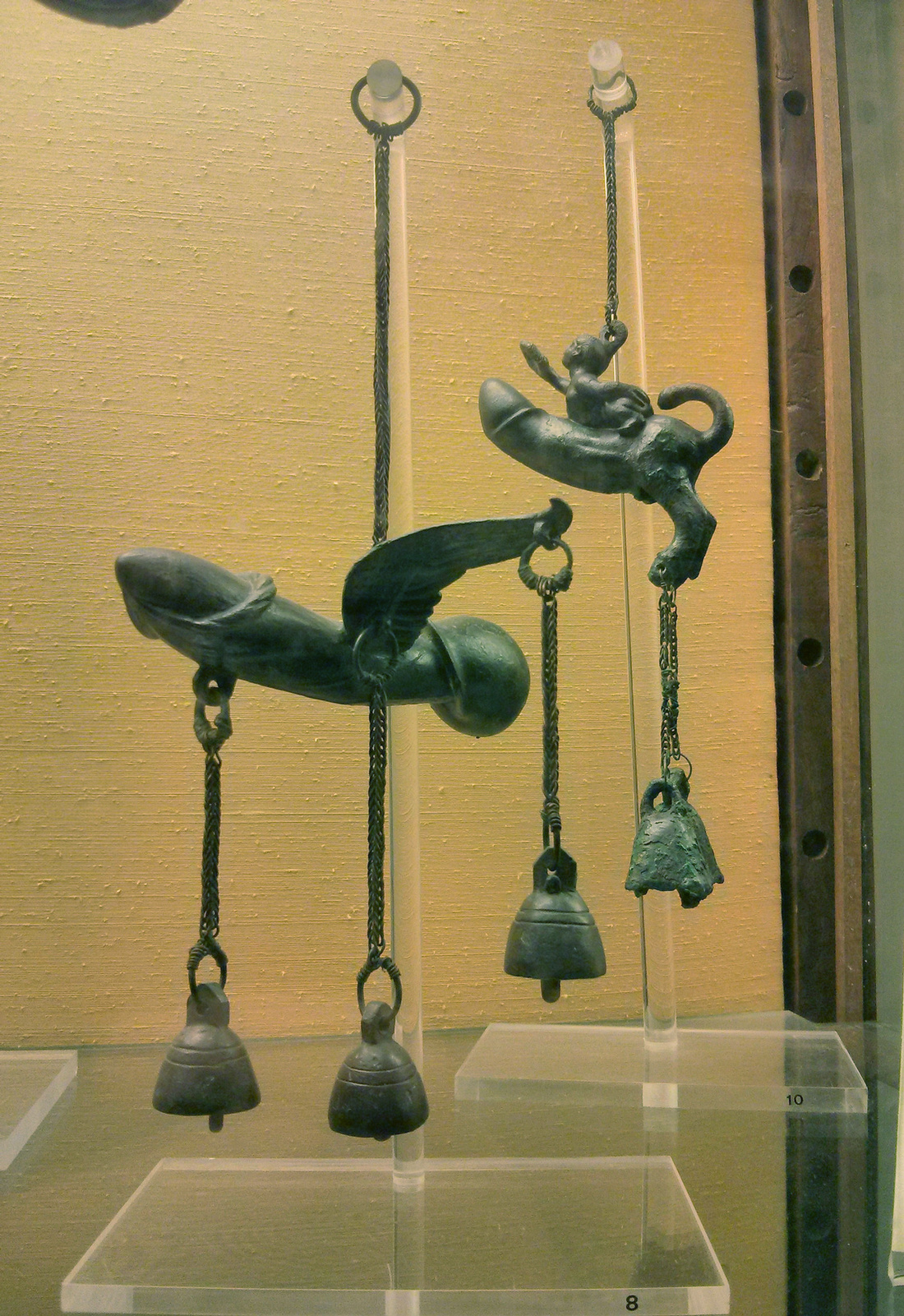
Photo by deadmanjones, via Flickr.
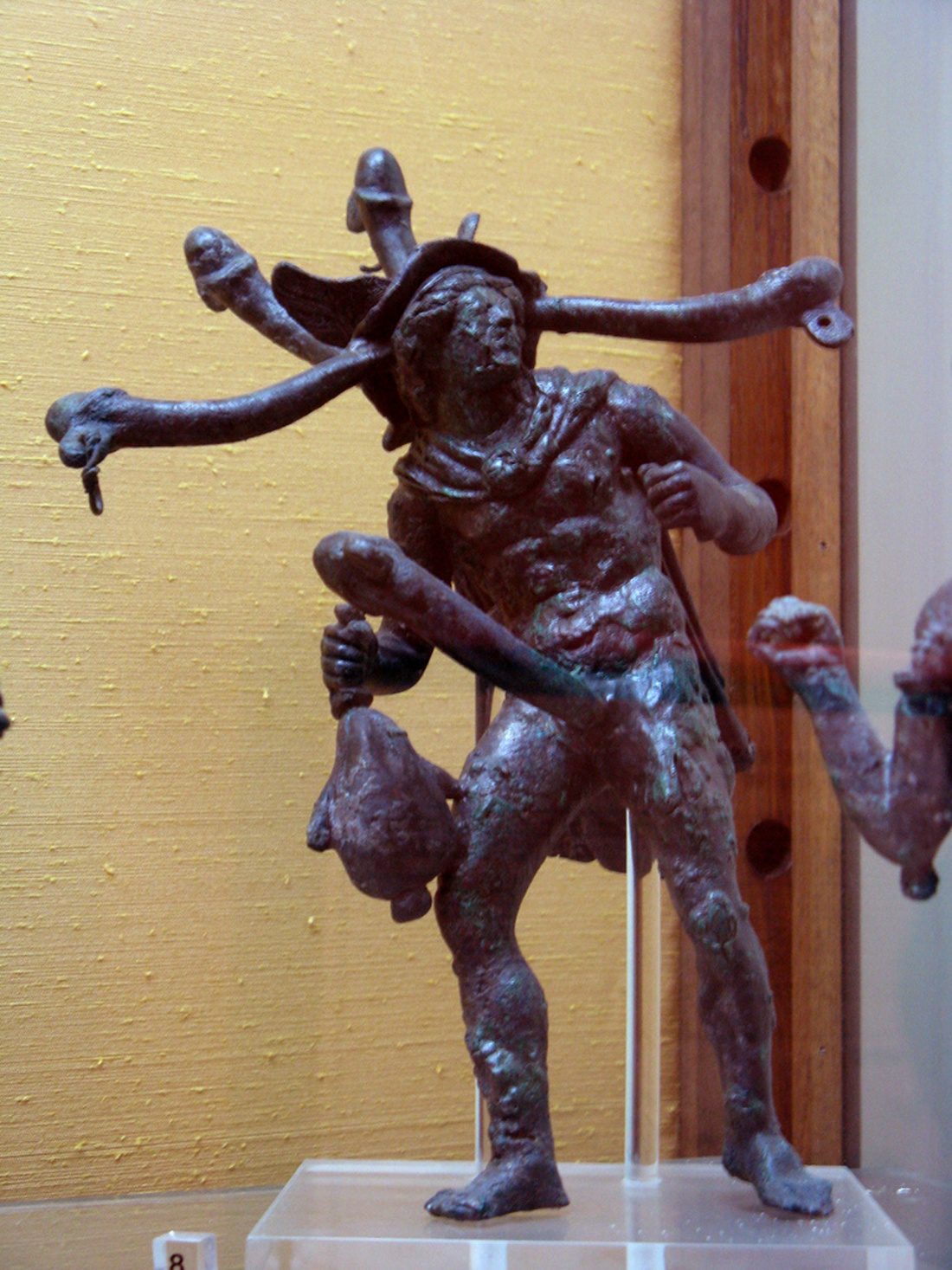
Statue of Hermes Polyphalloi. Photo by Lady Erin, via Flickr.
Efforts to suppress and obscure the pagan antiquities only intensified their allure, however, and the collection soon became one of the museum’s most popular attractions. Between 1822 and 1824, annual permit requests surged from 20 to upwards of 300, forcing the minister responsible for the Cabinet to prepare pre-printed authorization forms to meet the spike in demand. A well-placed bribe or forged entry permit provided access to countless more interested parties.
Relegated to a kind of semi-permeable purgatory, the Cabinet would languish in obscurity for most of the next two centuries. At sporadic intervals it would open to the public, only to fall under the yoke of state restriction once more. Try as they might, museum activists simply could not shake the stigma of obscenity that shrouded the collection.
In the second half of the 19th century, for example, then-director Giuseppe Fiorelli produced “a detailed catalogue of the pornographic materials in an effort to normalize the collection,” says Valeria Sampaolo, chief curator at the National Archeological Museum of Naples. “In his introduction he argues very clearly that the objects are not innately scabrous, but rather a sober depiction of normal human activities. He also demonstrates that the phallus, in particular, was deployed primarily as a good-luck charm to ward off jealousy and misfortune, not simply as a symbol of sexuality but as a means of exalting the regenerative powers of nature itself.”

Photo by Darren and Brad, via Flickr.
Even Fiorelli’s academic appraisals could not blunt the visceral potency of the collection, however. “The ancient world offers a window into a more sincere, spontaneous appreciation of human sexuality,” concedes Sampaolo by way of explanation, “much of which, unfortunately, runs counter to the prudery that defines post-Victorian social mores.”
It wasn’t until 2000 that the collection—now boasting well over 250 individual artifacts—would finally open its arms to the general public. Almost two decades later, the Cabinet still remains as incongruous as it has always been: at once comically crass and a pillar of patrimonial preservation. It is a place, as one New York Times article notes, where “curators delicately refer to the Secret Cabinet or the ‘Forbidden Collection,’ but museum guards loudly direct visitors to ‘il pornografico.’”
Above all, it is open—and this time for good. As the motto painted on the ceiling of the museum’s Grand Salon reads, now almost repentantly, “objects of memory, even if conserved lovingly, languish—iacent nisi pateant—if they are not exhibited to the public.”
—Ian Shank
Adaugă un comentariu
© 2024 Created by altmarius.
Oferit de
![]()
Embleme | Raportare eroare | Termeni de utilizare a serviciilor













Pentru a putea adăuga comentarii trebuie să fii membru al altmarius !
Alătură-te reţelei altmarius